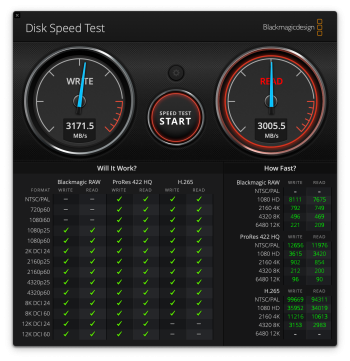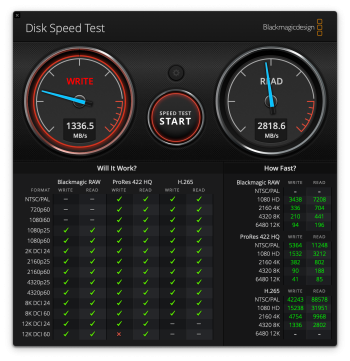@Pressure "Thunderbolt 3 only has 22Gbps for data while Thunderbolt 4 has 32Gbps."
But how can you use this extra 'dynamic 'allocation of bandwidth?
'The key differences between Thunderbolt 4 and Thunderbolt 3 are a minimum bandwidth requirement of 32 Gbit/s for PCIe link...' (source Intel).
But Intel (before TB5) haven't produced a Device Controller chip (JHL series) for devices to connect to that 32 Gbps.
Intel has only produced the TB4 Goshen Ridge JHL8440 hub controller chip, which only allows 1 lane of PCIe (~800MB/s) to be allocated to internal NVMe devices (SSDs).
The rest is allocated to up to 3 downstream TB3/4 ports, which share the 32Gbps.
With DP video, USB3.*, Ethernet, audio etc bringing the dynamic allocation up to the nominal 40Gbps.
So to use a TB4 computer port for connecting SSDs, the fastest individual TB connection is still TB3 (22Gbps).
It's only USB4 devices that can be faster than TB3.
"Thunderbolt 4 is an implementation of USB4 "40 Gbps". Thunderbolt 4 mandates some features that are optional in USB4 including: backwards compatibility to Thunderbolt 3, minimum PCIe ("32 Gbps") and DP capabilities..." (source Intel).
"USB4 is based on the Thunderbolt 3 protocol; however, the implementation of Thunderbolt 3 protocol is mandatory only for hubs"(source USB-IF).
The USB4 protocol does allow up to the full 32Gbps to go to a single attached device.
Until TB5 is fully available...
Which poses an interesting possibility.
Will existing TB4 computer ports work at the higher (USB4 32Gbps) data rate with a TB5 SSD attached?



